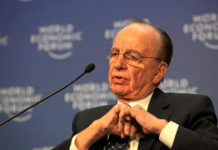Dublin Port Workers Support Group organiser Joe Mooney gives his view of the lessons learnt in the Docks Strike, which over its seven month duration saw communities mobilised behind the workers but had a disappointing conclusion.
The scene: A small fishing boat containing strikers and supporters, one standing with placard held aloft, is thrown perilously about, as a monstrous ferry looms above them. It was a dramatic image, classic David versus Goliath stuff, and one symbolic of the greater struggle that it featured in. As it was in 1913, it would be again almost a century later – workers in Dublin Port going head to head with ruthless, better resourced employers.

The dispute at Marine Terminals LTD (owned by the UK’s Peel Port group) had begun over forced redundancies and major changes in working conditions. It was to last 230 days, and end unsatisfactorily.
On our side we had the greatest weapons of all – the tradition of working class solidarity, militant action and our determination to win. Support from the Port communities was inspiring, and grew rapidly to involve other workers, trade unions and political groups. The picketing workers were visited by well wishers on a daily basis. Simultaneous marches took place from North and south of the River, joining together on the Bridge to march united to the gates of MTL. And on one occasion through them, as a mass trespass took place, calling for “Scabs out, Dockers in”. There was also the launch of our own “Irish citizen Navy” which attracted national and international media attention.
With secondary picketing by SIPTU being illegal, the Dublin Port Workers Support Group took the initiative to “broaden the battlefield”. Deutsche Bank (part owner of Peel Ports) was regularly picketed in the IFSC and internationally. A Dublin Castle dinner, hosted by the Tanaiste, for business leaders, including a Deutsche bank managing director, was gate crashed. Dunnes stores was targeted for protests, to great public support, for selling goods handled by MTL scabs. Even Celtic FC, with a director linked to Peel, could not escape, with the club bombarded with an e-mail campaign, and aware of the threat of protest action. The Scottish media was surprisingly sympathetic to the Irish workers. There was always a great turnout at the many court appearances the workers had to endure. Dublin City Council unanimously passed a motion supporting the workers, and called on the state owned Dublin Port Company to intervene.
Dock workers all over the world, affiliated to the International Transport Workers Federation (ITF), Joined forces to actively support the strikers. This international dimension, with a threat to their business activity across the globe, was the greatest nightmare the company could imagine. A visit to Dublin by Australian, British and U.S. supporters was a huge morale boost.
The Peel group is worth£6 billion. £2 million sterling was allocated to break this strike. Scabs were imported from Scotland and Belfast to supplement the native species. A “security company”, founded by ex-S.A.S. members was hired. Having previously operated in Iraq, Afghanistan and South America, the presence of this “private army” didn’t interest the usual media “security correspondents”.
There was also the bosses greatest friend- the law. Workers were injuncted from effective picketing, and an attempt was made to jail people for alleged breaches of the injunction. A bizarre legal action was taken to prevent the MTL scabs being described as scabs! The company tried to use their vast wealth to buy control of the English language. They had a partial victory, with the naming of individual MTL scabs now subject to injunction.
Domestic and international solidarity was putting real pressure on the company. However, the workers representatives SIPTU were ultimately responsible for how the strike proceeded. Weaknesses in current union strategies became evident during the dispute. Once the strike began, it was left to drift for a period. The inability to close down Dublin Port, even for a limited period was a sign of weakness. The aim for the union became “ending the dispute”, with the possibility of an actual victory slipping off the agenda. A blinkered faith in “industrial relation structures” has become a strait jacket. Without the involvement of the ITF this dispute was heading towards a defeat of one variety or another.
The dispute ended after 230 days, with 11 of the strikers keeping their jobs. Their return to work was staggered over 3 months. In their workplace they will be outnumbered by the scabs, who have been allowed to maintain their union membership. A number of workers, including very committed strikers, were excluded from the return. While the saving of these jobs is welcome, this is not the victory that many had hoped and fought for.
The commitment and determination of the workers, in a very harsh climate, must be applauded. The strength of support, the rallying of the communities, the imagination and variety of actions and the international solidarity are all positives we can take from this 7 month dispute.
Weaknesses in the trade union approach must be addressed. The state’s industrial relations structures may have some role to play, but they are not the be all and end all. While the workers side is subservient to these institutions, the employers can cherry pick their involvement and choose to ignore it when it suits them. This often leaves nothing but a cap in hand approach and a vague appeal for “fair play”. Whether one chooses to judge it good, bad or indifferent the partnership era is over.
The union leadership is acting like a jilted lover, hoping that this is just a trial separation, and not a full scale divorce. Our class enemies are acting accordingly and have moved on, antagonistic and dismissive.




